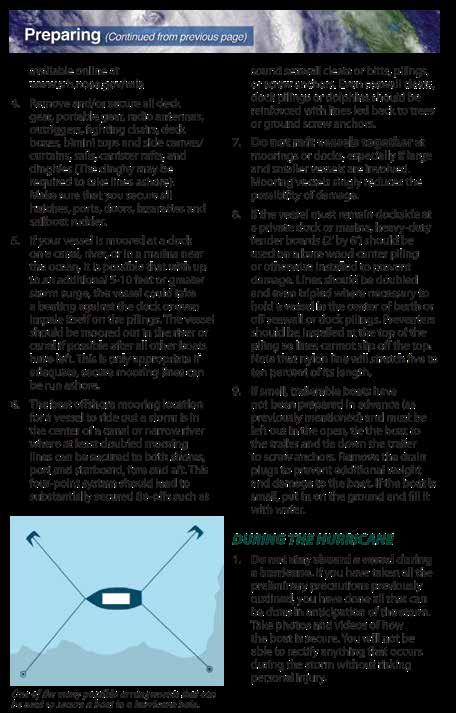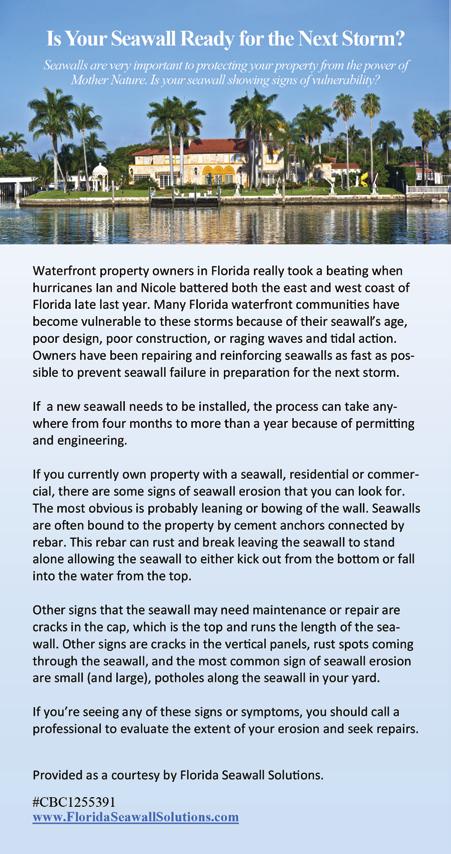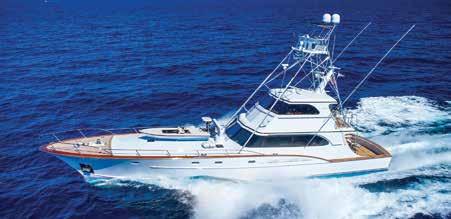
3 minute read
IGFA RELEASE RECOMMENDATIONS
Modifying the types of hooks you use can significantly affect a fish’s chances for survival after it is released. When fishing with natural bait (dead or alive), IGFA strongly encourages the use of non-offset circle hooks. Extensive research on species from salmon to sailfish has demonstrated that circle hooks gut hook significantly fewer fish without sacrificing catch rates. Lures that have treble hooks should have the barbs bent down or removed to facilitate easier hook removal.
Interested in the science behind circle hooks? Read Circle hooks, 'J' hooks and drop-back time: a hook performance study of the south Florida recreational live-bait fishery for sailfish, Istiophorus platypterus published in Fisheries Management and Ecology in 2007.
Advertisement
If you’re not going to photograph your fish or document it for record purposes, the best method is to not remove the fish from the water. In-water releases can be aided by the use of de-hooking devices that eliminate the need to boat the fish and keep hands safe distances away from the fish. If the fish has swallowed the hook, it is much better for the angler to cut the leader as close to the fish as possible, rather than trying to forcibly remove the hook.
If a fish needs to be removed from the water to remove the hook and/or document it for record purposes, anglers should use either their hands or knotless, rubberized landing net. Most small to moderately large sized fish can be landed by hand. Ideally, this should be done with wet hands or soft, wet gloves to minimize slime and scale loss. Lip gripping devices may be used to help subdue fish. However, they should not be used to hoist fish vertically out of the water, as this can cause damage to jaw muscle and bone as well as to internal organs. The best method for removing fish from the water is to grip the fish or the lower jaw and support the fish’s underside. Again, the point is always to hold fish horizontally and not vertically.
The Marine Discovery Center has spent 25 years informing and educating citizens and guests about the amazing biodiversity of the Indian River Lagoon.

Tagged as the most biologically diverse estuary in North America, the Indian River Lagoon boasts more than 4,000 species and spans 156 miles down Florida’s east coast — providing countless ways to engage the public. Programs at MDC for all ages are designed to offer hands-on, feet-wet learning opportunities through classes, camps, lectures, boat and kayak eco-tours with certified naturalists and teachers.
MDC’s daily eco-tours and monthly free public lectures help visitors understand the ecology of the Lagoon. Camps, field trips, and other education offerings allow children from pre-K through high school (and beyond) to experience our local ecosystems. Coastal ecosystem and other supplemental classes are offered through the Florida Master Naturalist Program (FMNP) at the center multiple times throughout the year.
Working with area colleges and universities, as well as environmental conservation groups, the center also provides opportunities for citizen scientists to become personally involved in restoration and sustainability activities, such as oyster-shell recycling, shoreline restoration, water-quality testing, invasive-plant eradication, sea grass surveys and horseshoe crab surveys.
In addition to our education and conservation science programs, MDC also hosts (and co-hosts) various special events throughout the year including fundraisers, symposiums, and galas. The center always boasts a busy calendar!
The nonprofit Marine Discovery Center is now housed in the former administration building of New Smyrna Beach High School, which operated on the 22-acre site from 1963-2006. Prior to the school’s construction, the site was a natural salt marsh.
Through grant funding in 2014, 5½ acres of salt marsh was restored on the land adjacent to the current MDC building, followed by construction of a butterfly garden, nature play area, a 29foot observation mound overlooking estuarine waters, an archery range and a living shoreline demonstration area. Future plans include construction of an amphitheater and kayak storage and launch area.
Widely recognized as a regional resource for the Indian River Lagoon, the Marine Discovery Center is centered on education and outreach in an effort to preserve, protect and restore the lagoon for generations to come.
Admission to our facility & grounds is FREE!
Tours, education programs, and other special events have associated fees.
What the 2022 Hurricane season in Florida may have lacked somewhat in quantity it far exceeded in impact. The first of Florida’s two hurricanes this















